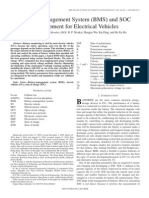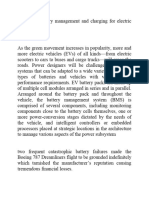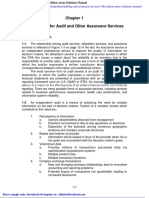0% found this document useful (0 votes)
140 views11 pagesBms Major Project
This document presents a project proposal on developing a Battery Management System (BMS). It provides an overview of typical electric vehicle battery configurations with multiple cells connected in parallel and series. It explains that a BMS is needed to monitor each cell's voltage, current and temperature to ensure safe and efficient operation. Key responsibilities of a BMS include monitoring the state of charge and state of health of battery modules during charging and discharging. The proposal outlines the objectives to design a BMS that optimizes charging cycles for speed and thermal management while preventing overcharging and accidents.
Uploaded by
Aditya MishraCopyright
© © All Rights Reserved
We take content rights seriously. If you suspect this is your content, claim it here.
Available Formats
Download as PPTX, PDF, TXT or read online on Scribd
0% found this document useful (0 votes)
140 views11 pagesBms Major Project
This document presents a project proposal on developing a Battery Management System (BMS). It provides an overview of typical electric vehicle battery configurations with multiple cells connected in parallel and series. It explains that a BMS is needed to monitor each cell's voltage, current and temperature to ensure safe and efficient operation. Key responsibilities of a BMS include monitoring the state of charge and state of health of battery modules during charging and discharging. The proposal outlines the objectives to design a BMS that optimizes charging cycles for speed and thermal management while preventing overcharging and accidents.
Uploaded by
Aditya MishraCopyright
© © All Rights Reserved
We take content rights seriously. If you suspect this is your content, claim it here.
Available Formats
Download as PPTX, PDF, TXT or read online on Scribd
/ 11
























































































